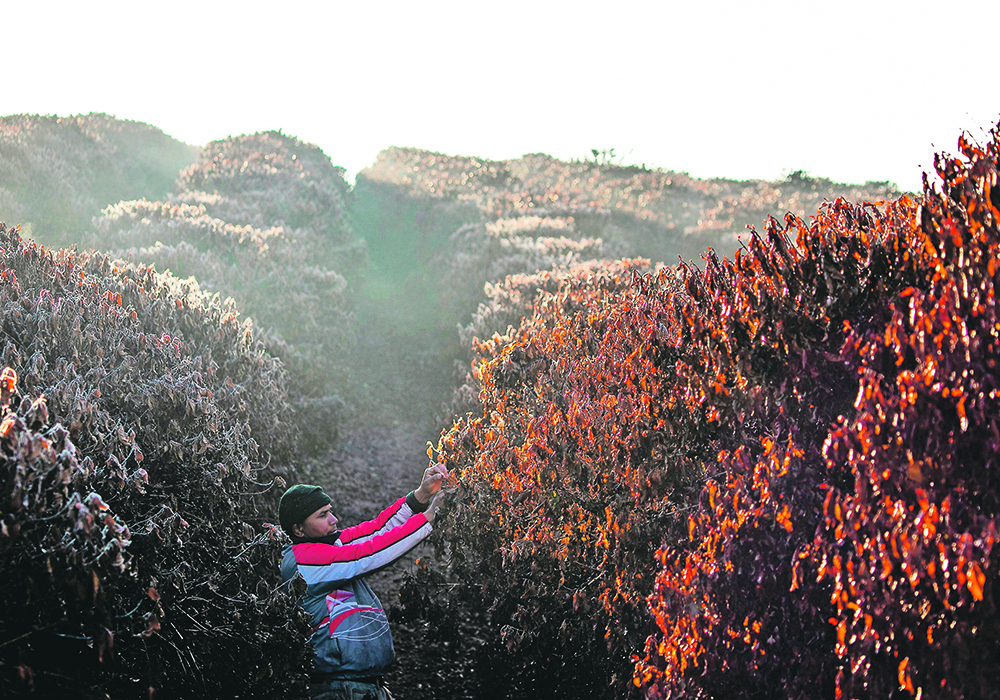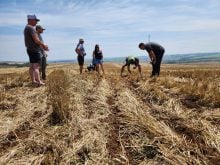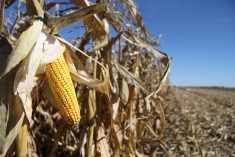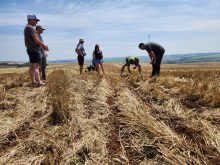Frost in June and again at the end of July are affecting the nation’s output of key farmed commodities
LONDON, SAO PAULO, NEW YORK (Reuters) – Arabica coffee prices have surged to the highest level in almost seven years recently after severe frosts damaged crops in Brazil.
Brownish spots have stained large areas of coffee fields in the south of Brazil’s top producer Minas Gerais, a sign that the worst cold snap in nearly 30 years will hurt production for at least the next two crops.
Frost has posed a threat to coffee trees ever since the crop was first brought to Brazil in the 18th century.
Major producing states in Brazil, such as Minas Gerais, are more frost prone than growing regions in other major Arabica coffee producing countries such as Colombia and Ethiopia.
Research conducted by Refinitiv comparing temperatures and precipitation in the 30-year period from 1959-1988 with 1989-2018 shows the climate in Brazil is, on average, becoming wetter and warmer.
Extreme cold events are becoming less common but extreme heat is becoming more frequent.
The most recent severe frost was in 1994 and in that case as well there was the devastating combination of drought and frost.
Coffee is a tropical crop and doesn’t like low temperatures, particularly if they dip below 5 C. Sub-zero temperatures, around -3 to -4 C, when ice crystals form in the plant’s cells are lethal, destroying flower buds, flowers and fruit and causing frost burn on leaves, which in severe cases leads to complete defoliation of the coffee tree.
The severest form of damage is due to the formation of ice crystals, which puncture the cells within the affected plant parts, causing them turn black and die, ultimately leading to the death of the plant.
Aaron Davis, who conducts research into coffee at The Royal Botanic Gardens, Kew in Britain, said frost can be particularly devastating after a long period of drought, such as experienced this season, as leaves may have wilted already making them susceptible to low temperatures and frost.
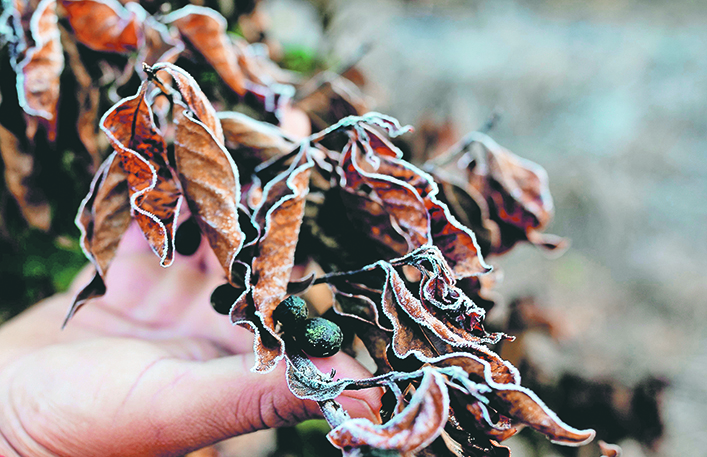
In some cases, it can take one or two years to recover from a frost episode but if the coffee trees die and have to be replaced by seedlings it can take four or five years to get a decent crop and up to seven years to fully restore maximum production levels.
The frosts have also affected sugar output in Brazil this season. The world’s largest producer and exporter has seen three frost events hit crops in the country’s center-south region in June and July, market analysts said last week.
Brazil has been hit with an unusually harsh winter this year with temperatures dropping to freezing levels for several days, hurting crops from corn to coffee and sugar cane. The frost follows one of the country’s worst droughts in decades, which also hit the nation’s agricultural industry hard.
Broker StoneX cut its projection for Brazil’s center-south sugar production to 34.6 million tonnes for the current crop, down from a May projection of 35.7 million tonnes, and 10 percent below last season’s record volume of 38.4 million tonnes.
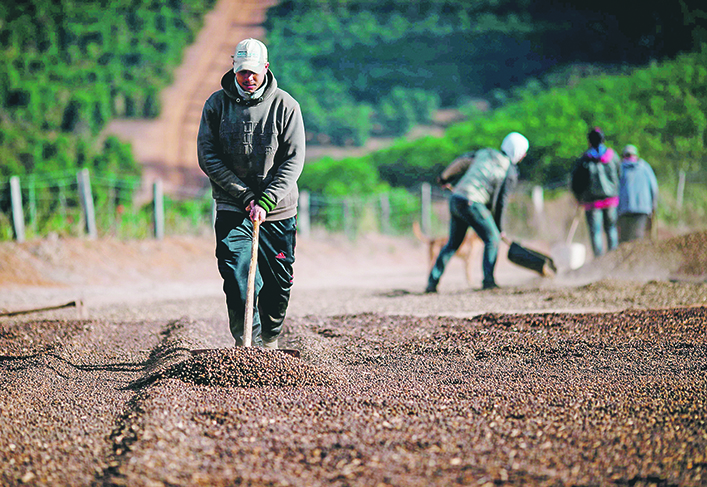
Asian commodities trader Wilmar, one of the world’s largest sugar merchants, slashed its estimate for Brazil production on Tuesday, saying it only expects around 28 million tonnes of sugar in 2021/22 due to extensive damage to cane fields.
Prices have soared on the expected crop loss. Sugar futures in New York were near the highest in four years last week.
Karim Salamon, Wilmar Sugar’s head of analysis, said that the widespread frosts will result in lower agricultural yields leading to a cane crush of around 490-500 million tonnes. Brazil’s central region crushed 605 million tonnes last season.
StoneX also expects the total cane crush to fall, but not as much. It sees it at 541 million tonnes, down from its previous view of 568 million tonnes.
The broker said it would not rule out further cuts to its projections, since the full extent of damages to crops from the three waves of frosts that hit Brazil are still being assessed.
StoneX now sees the global 2021/22 sugar supply balance swinging to a deficit of 1 million tonnes, from a surplus of 1.7 million tonnes seen in May.
Wilmar said that Brazil’s next sugar season would likely suffer as well.
“Immature cane stalks can be very susceptible to frost damage,” Salamon said. “This is in addition to the impact of lower replanting resulting from the recent droughts.”

